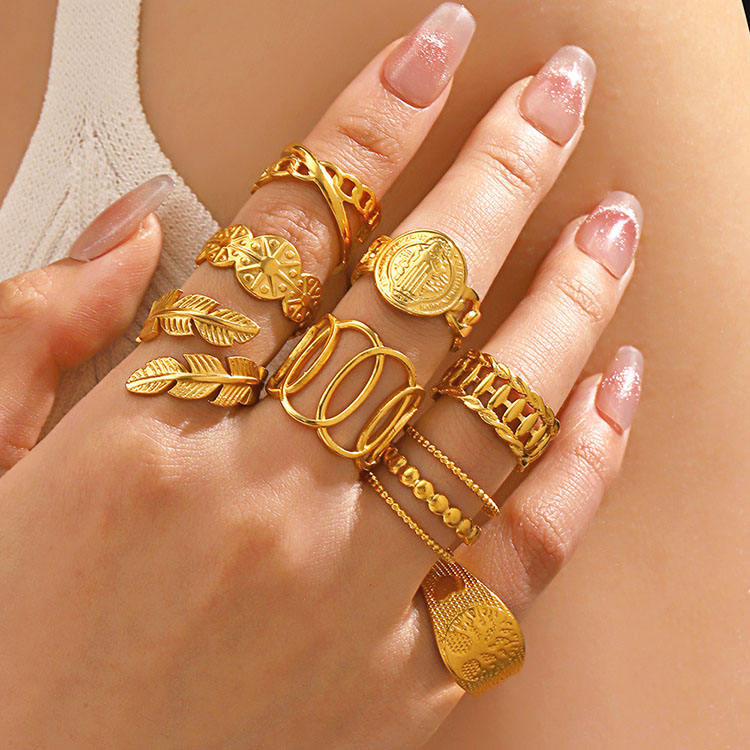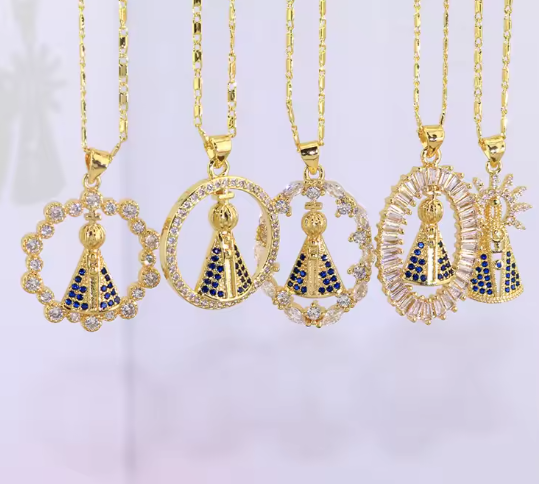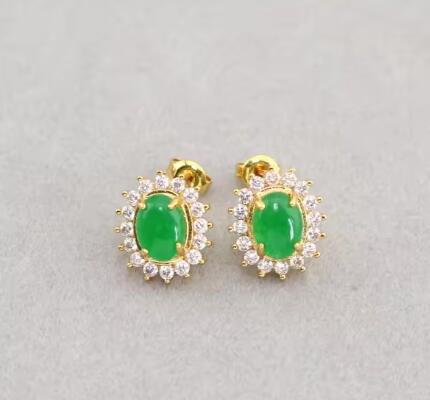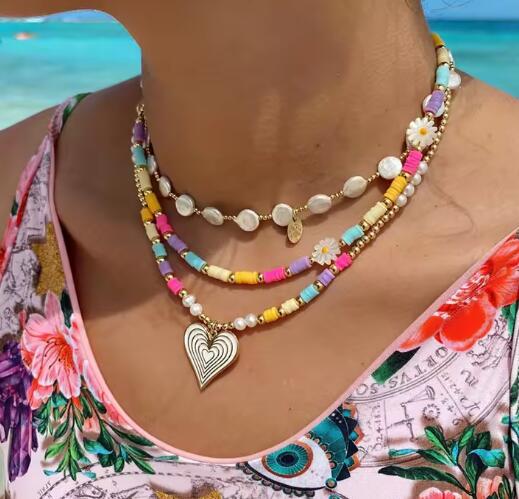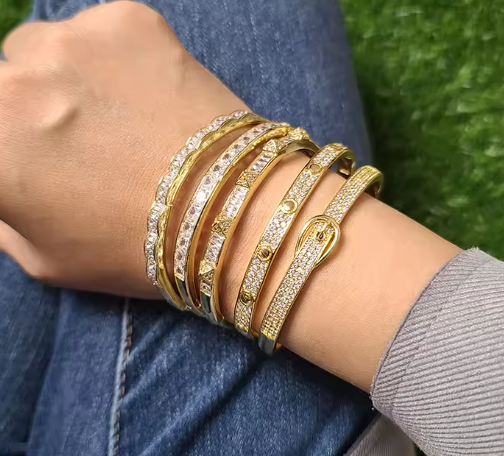Sustainable jewelry is defined by its commitment to reducing harm to the planet, ensuring ethical production, and promoting longevity—and natural stones excel in all three areas:
-
Lower Environmental Footprint: Unlike synthetic stones (such as lab-grown diamonds or resin-based gems) that rely on energy-intensive manufacturing (e.g., high-temperature labs, chemical processing), natural stones (like amethyst, turquoise, or jade) require minimal processing beyond mining and polishing. A 2024 study by the Jewelry Sustainability Council found that producing a natural quartz stone uses 60–70% less energy than creating a comparable lab-grown stone. Additionally, many natural stone mines now adopt “low-impact” practices, such as using water recycling systems and avoiding deforestation, further reducing their environmental impact.
-
Ethical Sourcing and Transparency: Today’s consumers demand clarity about where their jewelry comes from—and natural stone suppliers are responding with enhanced traceability. Leading brands like Mejuri and Pandora now share detailed “stone origin stories” on product pages (e.g., “this turquoise is sourced from a fair-wage mine in Arizona that supports local education programs”) and obtain certifications from bodies like the Responsible Jewellery Council (RJC). This transparency builds trust: a 2023 survey by Etsy revealed that 82% of sustainable jewelry buyers are more likely to purchase natural stone pieces when their sourcing is verified.
-
Durability Reduces Waste: Natural stones are inherently resilient. For example, sapphires rank 9 on the Mohs hardness scale, while emeralds score 7.5–8—making them far more resistant to chipping or scratching than fragile synthetic alternatives. This durability means natural stone jewelry lasts for decades (even generations), aligning with sustainability’s “buy less, buy better” ethos. The same Etsy survey found that 78% of eco-conscious buyers prioritize durability when shopping for jewelry, and natural stones are their top choice for long-lasting pieces.
Global sales trends and regional data clearly demonstrate how sustainable jewelry demand is boosting natural stone jewelry:
-
Global Growth Trajectory: The global natural stone jewelry market is projected to expand at an 8.2% compound annual growth rate (CAGR) from 2024 to 2030, according to Grand View Research. This is nearly double the 4.5% CAGR of the synthetic stone jewelry market during the same period. The acceleration directly correlates with a 65% increase in Google search queries for “sustainable jewelry” over the past two years, per Google Trends data.
-
Regional Breakouts: In Europe, natural stone jewelry sales rose 30% in 2023 (up from 18% in 2022), driven by the EU’s Circular Economy Action Plan, which encourages consumers to choose eco-friendly products. In North America, direct-to-consumer (DTC) brands like AllSaints report that 45% of their sustainable jewelry revenue now comes from natural stone pieces—up from just 25% in 2021. In Asia-Pacific, demand is also surging: China’s natural stone jewelry market grew 22% in 2023, with shoppers citing “sustainability” as the top reason for choosing natural over synthetic stones.
-
Demographic Drivers: Gen Z and millennial buyers (ages 18–35) account for 60% of natural stone jewelry sales globally, per a survey by the National Retail Federation (NRF). This group is also willing to pay a premium: 58% of respondents said they’d spend 10–15% more on natural stone jewelry than synthetic options, with “environmental responsibility” as their primary motivation.
Forward-thinking brands are leveraging the natural stone-sustainability connection to drive sales, using three key tactics:
-
Origin Storytelling: Brands are turning natural stones’ sourcing into a selling point by sharing “journey narratives.” For example, Brilliant Earth’s “Origin Stories” collection features natural stones paired with details about their mines (e.g., “this lapis lazuli comes from a women-owned quarry in Afghanistan that provides healthcare to workers”). This collection saw 50% higher sales than the brand’s synthetic stone lines in 2023.
-
Eco-Friendly Material Pairings: Natural stones are often combined with sustainable metals (recycled silver, fair-trade gold, or reclaimed brass) to create fully sustainable sets. A recycled silver necklace with a natural peridot, for instance, feels more “authentically sustainable” than a synthetic gem on newly mined metal. This approach resonates: brands like Patagonia Provisions report that 70% of buyers of their natural stone jewelry choose pieces with recycled metal bases.
-
Upcycled and Vintage Natural Stones: To further reduce environmental impact, brands are repurposing natural stones from old or unused jewelry (e.g., vintage rubies from 1950s rings, antique emeralds from heirloom brooches) into new designs. This “upcycling” eliminates the need for additional mining and creates unique, one-of-a-kind pieces. Patagonia Provisions’ upcycled natural stone jewelry line sold out within two weeks of its 2024 launch, highlighting strong consumer demand for this approach.
While sales are growing, natural stone jewelry faces occasional skepticism—mostly around mining practices and cost. Brands are proactively addressing these concerns:
-
Dispelling Mining Myths: Some consumers worry that natural stone mining harms the environment. Brands counter this with third-party certifications (RJC, Fairmined) and stories of mine rehabilitation (e.g., “this quartz mine was restored to a forest ecosystem after extraction, supporting local wildlife”).
-
Justifying Price Points: Natural stones can cost more than synthetics, but brands emphasize long-term value. For example, a natural ruby ring may cost 20% more upfront than a synthetic one, but it can last 50+ years (vs. 5–7 years for synthetic alternatives). This “cost-per-wear” argument resonates with sustainable shoppers focused on reducing waste.
In summary, the global surge in sustainable jewelry demand is a powerful driver of natural stone jewelry sales. By aligning with ethics, durability, and minimal environmental impact, natural stones have become the preferred choice for eco-conscious consumers. For brands, this means doubling down on transparent sourcing and storytelling; for shoppers, it means owning beautiful jewelry that aligns with their values. As sustainability continues to shape the industry, natural stone jewelry’s growth trajectory shows no signs of slowing.
